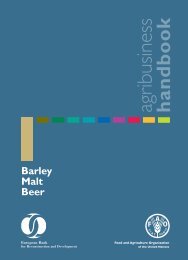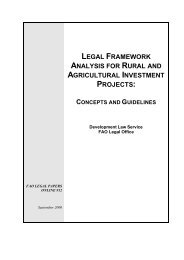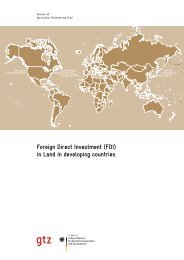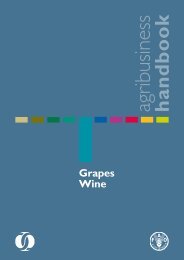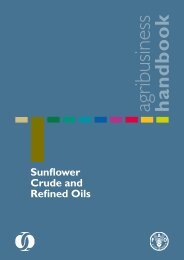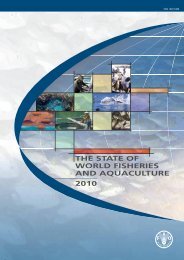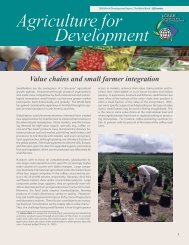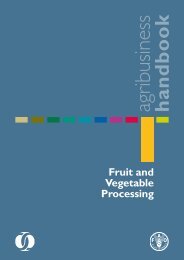Agribusiness Handbook: Milk / Dairy Products - FAO
Agribusiness Handbook: Milk / Dairy Products - FAO
Agribusiness Handbook: Milk / Dairy Products - FAO
Create successful ePaper yourself
Turn your PDF publications into a flip-book with our unique Google optimized e-Paper software.
in Siut Bulak to support the company’s expansion, which had already received<br />
financial assistance from the Swiss government. In the same year, under the<br />
Direct Investment Facility (DIF), the EBRD also invested about EUR 1.2 million<br />
in the Kyrgyz cheese manufacturer <strong>Dairy</strong> Spring. Earlier, in 2006, Sheen-line,<br />
a dairy producer specializing in ice cream and located in Bishkek, obtained<br />
a USD 900,000 loan from the Kyrgyz Investment Credit Bank (KICB). KICB<br />
was established in 2000 by the EBRD, the Aga Khan Foundation and other<br />
shareholders, with technical assistance from Japan.<br />
4.2.5 The Republic of Moldova<br />
Following the dissolution of the Union of Soviet Socialist Republics (USSR),<br />
the Republic of Moldova embarked on a programme of privatization and land<br />
reform. This resulted in a very fragmented farm structure with many small<br />
plots, and led to a collapse of dairy farming. Cow herds and milk production<br />
declined. Since 2005, dairy cow herds have started to recover, and milk output<br />
has reached 575,000 tons. At 2,800 kg/cow, yields are better than those in<br />
many other countries in the region. Average herd size is about six cows per<br />
holding, and some large commercial farms each have 100 to 200 animals.<br />
4.2.6 Mongolia<br />
Following the end of the Soviet system in the 1990s, the dairy sector collapsed,<br />
and is only now staging something of a recovery. All kinds of animals are<br />
milked in Mongolia – camels, mares, yaks, cows, sheep and goats. Much of<br />
the milk is made into fermented products for local consumption. Cities have<br />
had to rely on imported products. Annual yields are extremely low at less than<br />
500 kg/cow, but there is no real infrastructure to enable commercial farming or<br />
processing to take place. Mongolia is three times the size of France, making<br />
any kind of national milk collection system unfeasible. Instead, attention has<br />
focused on developing dairies near the urban population centres. Only one<br />
dairy – the old state dairy at Ulaanbaatar – is capable of processing more than<br />
10 tons of milk a day. The remaining state farms and dairies were looted and<br />
equipment lost in the 1990s.<br />
4.2.7 Uzbekistan<br />
Growth potential in the Uzbek dairy sector is high. Today, the county’s average<br />
milk consumption per capita is about 10 litres/year, compared with almost 90<br />
litres/year in the early 1990s. <strong>Products</strong> such as milk, kefir, butter and the local<br />
dairy products kaymak (a variety of sour cream) and katyk (a variety of kefir)<br />
enjoy the greatest demand. In Uzbekistan, consumers make a clear distinction<br />
between raw and processed milk. Due to tradition and price factors, the share<br />
37



